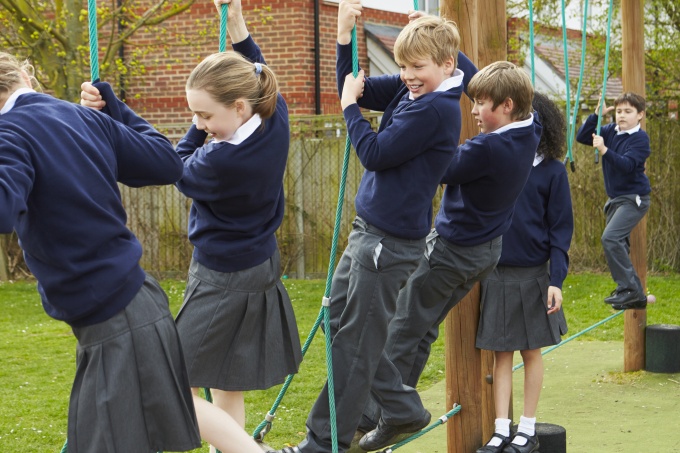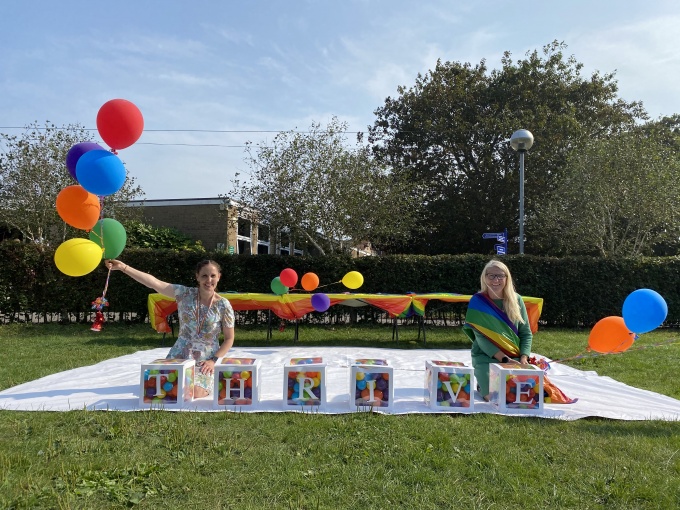Read how Olivia Hennessey, Assistant Headteacher, and Lisa Kelly, Thrive Licensed Practitioner, at Perry Wood Primary and Nursery School, in Worcester, used the Thrive Approach to support children’s emotional wellbeing during the pandemic and after they returned to school. As a result, relationships between staff and pupils are stronger than ever and the school can evidence the impact of its approach to wellbeing for future Ofsted inspections and other stakeholders.
Q) When the first lockdown was announced, in March 2020, how did you prepare to support pupils from home?
A) Lisa Kelly: “For the first lockdown, there was no chance to prepare. It was a case of watching the news and hearing what was going to happen. Our first thoughts were for the children at school and how they would manage. When we went into lockdown, we were communicating with parents through social media platforms like Class Dojo and Facebook and releasing daily challenges for them to do with their children. We asked them for feedback about how they were getting on because we wanted them to know that although we weren’t able to see them face-to-face, we were still here for them, at the end of a phone or computer. We wanted them to know that we were available when they needed us.”
Olivia Hennessey: “We had no time to prepare. Thrive® were releasing home activities for children to do with their families and we suggested that every child did a Thrive activity each week, using the activity packs available online so that they could still get some sort of input from Thrive. We also got funding from some outside agencies to distribute activity packs to the children who were having one-to-one Thrive as well as food parcels for families where children were in receipt of free school meals.”
"We wanted them to know that although we weren’t able to see them face-to-face, we were still here for them."
Q) What sort of impact did that initial phase of the pandemic have on children’s social and emotional wellbeing? What were children and their families telling you about how they were coping and how did you respond?
A) Lisa: “When school was initially closed, we had some calls from parents about the emotions they were feeling. Some of them said they were struggling with cabin fever because they weren’t able to get out. When school opened for the key worker and vulnerable children, we found that some of our Thrive children came back to school. We also found that there were children who hadn’t previously needed any support who were worried about their parents and the work they were doing and whether they would be safe. We made sure that we kept in touch with our families throughout and that we made suggestions about what they could do during lockdown that might help them.”
"We made sure that we kept in touch with our families throughout."
Q) How about as children began to return to school? What behaviour or issues did you observe and how did you use the Approach to support them?
A) Olivia: “When the children did return there were some negative emotions – some fear and anxiety. It was very apparent that they had been through something that had been extremely difficult for them, for many different reasons, and it was evident that it was going to be a tough situation for us to manage. We were at least able to plan for the return to school. Lisa prepared packs for the children looking at the different emotions involved and offering them reassurance and techniques to help them to emotionally regulate. We used Thrive as a structured, timetabled approach so that we could be sure that all children were given individual, appropriate support.”
Lisa: “When school fully reopened, we made sure that, in the first five days, every class did a 30 minute Thrive session, every day. We did sessions on stress, anxiety and bereavement. We also broadened this out so that it didn’t just cover issues relating directly to Covid but included things like the death of a pet because we knew that, as well as Covid, the normal ups and downs of life would have been going on as well. When the children came back they were withdrawn and sombre. There was a lot of uncertainty and worry about standing next to their friends and, of course, we were still working in small groups then. At that point, everything had changed for our children, even the rules in school – adults had to wear face masks and you had to follow arrows on the floor to move around – so there was an extended period of disruption and uncertainty for them.”
"We wanted to raise the profile of what different needs might look in school and to make sure that staff felt confident and supported in supporting our pupils."
Olivia: “We also used Thrive to help staff. When school reopened, I did some staff training that focused on core principles like gratitude and self-efficacy. This meant that the first CPD they had when they returned was Thrive. We wanted to raise the profile of what different needs might look in school and to make sure that staff felt confident and supported in supporting our pupils. Thrive helped us to do that in a way that dovetailed with how we were working with our children.”
Q) How about as things started to return to normal when restrictions were fully lifted?
A) Olivia: “Once restrictions were lifted, things started to feel more joyous. Obviously, Covid was still around, it still is, but it felt like things were starting to get back to normal. Not having to wear a face mask was a big help – it’s much easier to build rapport and to communicate with children, and colleagues too, when they can see your face and, especially, your smile.”
Lisa: “Covid is still around but I think we can see now that our children have adapted remarkably well. We’re lucky we had Thrive because it’s had a real impact on how we have supported pupils during the pandemic. It has been a brilliant help to us throughout the whole time because it gave us practical suggestions about things for children to do with their families while they weren’t in school and helped us to feel confident in communicating with them about their emotions. We have lovely staff here who are very much on board with the Thrive ethos. I think, with the preparation we were able to do, we were able to take the pressure off them because wellbeing was one thing they didn’t have to worry about – they knew we had an effective plan in place.”
Olivia: “I’ve recently done a behaviour review and found that all of our pupils who were receiving 1:1 Thrive interventions feel happy to be in school again. There are a couple of issues where children need help with behaviour, but we can use Thrive to decide on bespoke support for them. As a team, we can talk about this and decide the right way to help each individual.”
Q) How would you summarise how the Thrive Approach has helped you to manage the impact of the pandemic?
A) Olivia: “Because we had already embedded Thrive before the pandemic, we knew we had an approach to wellbeing that works. We waited two weeks after school fully reopened and then we went back to doing Thrive-Online® assessments so it was a case of ‘off we go again, back to normal’ because Thrive is so embedded here. We knew that we had wellbeing covered because the work we’ve done with Thrive has given us a really solid foundation. We know it’s something that Ofsted will be looking at in the future and we know we are prepared and that we can show data to evidence the impact it is having on the wellbeing of our children. We’re already in this position, which gives us confidence and peace of mind going forward.”
Lisa: “For us, Thrive has given us strong, positive relationships with the children. It helped us to maintain these relationships throughout the pandemic, whether children were at school or at home. I can honestly say now that the relationship we have with them has never felt stronger because of Thrive.”
Pass it on
Small actions can lead to a big ripple effect. If you enjoyed this post or found it helpful, please consider supporting us in our mission to help every child and young person feel safe, supported and ready to learn by sharing it using the social media buttons below.
Want to join a like-minded community of senior leaders and classroom staff benefitting from insights and strategies to improve attendance, behaviour and attainment? Add your email address below. (It’s easy to unsubscribe).

_680.jpg)

(7)_680.jpg)
_680.jpg)
